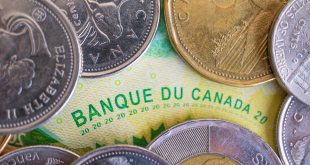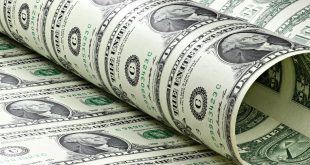Although it recovered somewhat from monthly lows, the US Dollar Index (DXY) was still under pressure. In the third quarter, the US economy grew at an annualized rate of 5.2%, which was higher than the previous estimate of 4.9%.
The US will release important data on Thursday, such as the Core Personal Consumption Expenditure Price Index for October and the weekly Jobless Claims, both of which are predicted to indicate further slowing of consumer inflation. Additional data on Pending Home Sales and the Chicago PMI is expected soon.
US yields continue to edge lower, while German and even UK bond yields dropped further. The divergence supported the Greenback but the upside was limited amid risk appetite.
After rising for four days in a row, the EUR/USD fell because it was unable to stay above 1.1000. The pair found support at 1.0960, and there is still an upside bias in the risk. The more than anticipated slowdown in inflation in Germany and Spain did not help the Euro.
Economic Data
A much lower core inflation rate is the main cause of November’s decline; food and energy only made a minor contribution. Due to several special effects, the inflation rate is probably going to be slightly higher again in the next two months. The ability of businesses to pass on their increased labour costs to their clients will, in the somewhat longer run, be the deciding factor. It is anticipated that this impact will stabilize core inflation.
More inflation data is due on Thursday with the Eurozone Consumer Price Index. The annual rate is expected to show an increase of 3.9%, below the 4.2% recorded in October. However, a reading below market consensus should not be a surprise. Germany will report Retail Sales for October and the Unemployment Rate for November.
Key Developments
GBP/USD reached three-month highs at 1.2732 before finishing flat just below 1.2700. The Pound gained ground on the Euro as well; EUR/GBP dropped below 0.8650. On Wednesday, the Swiss Franc performed better.
The USD/JPY fell precipitously, hitting a two-month low of 146.68 before turning around and moving back up to 147.30. Japan is expected to release data on housing starts, consumer confidence, retail sales, and industrial production on Thursday.
China will release the NBS PMIs, which are expected to show an improvement in both the Manufacturing and Non-Manufacturing indices, and are significant for Antipodean currencies and overall sentiment.
USD/CAD rebounded at the 100-Simple Moving Average (SMA) and climbed back to 1.3600. The bias is towards the upside, but the pair is trading around a strong support level. Canada will report Q3 GDP data and September’s Monthly Growth figures on Thursday.
BoC
Markets look for a flat print on Q3 GDP, reflecting another muted performance for households and a large drag from residential investment, which is below BoC projections for +0.8% and should reinforce expectations that the Bank is done tightening. Industry-level GDP should prove slightly more upbeat with a 0.1% increase but this will be paired with another soft flash estimate for October to anchor Q4 growth below 1%.
AUD/USD rose to its highest level in almost four months and then pulled back as the US dollar recovered strength. The pair held above 0.6600. Australia will report Private Sector Credit for October on Thursday.
NZD/USD posted its highest daily close since late July at 0.6150 but ended far from the top. Following the Reserve Bank of New Zealand’s hawkish hold, the pair peaked above 0.6200. The retreat casts doubt about more gains in the short term. On Thursday, New Zealand will release Building Permits data, and the ANZ Business Confidence report is also due.
Commodities
Crude oil prices rose 1.75% in a volatile session. The WTI barrel closed near daily highs, slightly below $78.00, amid speculation about the outcome of Thursday’s meeting of the Organization of Petroleum Exporting Countries and its allies (OPEC+).
Gold posted modest daily highs but failed to break above $2,050 despite the decline in government bond yields. Silver ended flat around $25.00.
Also Read:
Inflation, other factors could trigger global economic slowdown in 2024
Euro continues to lose ground against the Sterling
Crude ignores US oil stockbuild, rises ahead of OPEC+ meeting
USD/JPY aspires to stop its three-day declines
AUD/USD declines following higher than expected US GDP reading in Q3
PCE expected to signal falling inflation that is still too high
Fed’s Barkin: Unwilling to rule out another interest rate hike
 Noor Trends News, Technical Analysis, Educational Tools and Recommendations
Noor Trends News, Technical Analysis, Educational Tools and Recommendations





